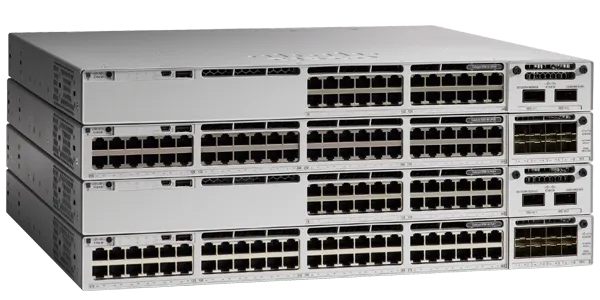
































The Cisco Catalyst 9300 Series Switches, known for their robust performance and extensive enterprise features, are a crucial part of many network infrastructures. However, when issues arise or administrators need to wipe configurations and restore default settings, performing a factory reset becomes essential. This guide covers all aspects of the Cisco 9300factory reset process, along with important technical details and additional context on when and why to use these reset procedures.
Before proceeding with a factory reset, it’s vital to understand scenarios where this action is appropriate. A factory reset deletes all custom configurations, returning the switch to its default state. Scenarios may include:
Re-deployment: Preparing a switch for use in a new network by removing old configurations.
Troubleshooting Persistent Issues: Resolving unresolved operational issues that haven’t responded to standard troubleshooting steps.
Security Concerns: Erasing all data to prevent unauthorized access if the switch is being repurposed or decommissioned.
Before performing a factory reset, ensure the following steps are completed:
Back Up Configurations: Save the current configuration to a secure location if you plan to restore or reference settings later.
Understand the Reset Impact: Be aware that a factory reset removes all configurations, including VLANs, IP settings, and access credentials.
Access the Console: Factory reset may require console access to confirm settings and monitor the reset process.
The Cisco Catalyst 9300 switches offer several methods to perform a factory reset, depending on the situation and available access. These include resetting from the console using CLI commands and the physical Mode button on the switch. Let’s explore each method:
This is the most commonly used reset method and requires console access to the switch. Follow these steps:
Access the switch’s console through an SSH or direct serial connection.
Log in with administrative privileges.
Enter privileged EXEC mode by typinghabilitarand pressing Enter.
To clear the configuration and reset the switch, use the command:
write eraseConfirm by pressing Enter. This command removes the startup configuration file.
Next, reload the switch with:
reloadUpon reload, confirm that you want to proceed without saving the running configuration by enteringnoif prompted.
After the switch reboots, it will return to the factory default settings.
This method requires physical access to the switch. Follow these steps:
Ensure the switch is powered on.
Locate the Mode button on the front panel of the switch.
Press and hold the Mode button for about 10-15 seconds, until the Status LED blinks amber.
Release the Mode button, and the switch will reset to its factory default state.
This option is useful when CLI access is not possible or practical.
The Cisco Catalyst 9300 Series is designed with a variety of technical specifications to meet enterprise networking needs. Key features include:
Ports: 8 x 1GbE PoE+ ports, 2 x 10GbE uplink ports
Stacking Capability: StackWise technology supporting up to 480 Gbps stacking bandwidth
Modular Design: Supports modular uplinks and hot-swappable fans
Security Features: Advanced security protocols, including TrustSec and MACsec
Power Supply: Dual redundant power supplies for increased reliability
Operating System: Cisco IOS XE, optimized for programmability and flexibility
Rendimiento: 1.2 Tbps switching capacity, suitable for high-traffic networks
After completing the reset, it’s essential to verify that the switch has returned to its default state. Here’s how:
Verify Configuration: Log in and check the running configuration to confirm settings have reset.
Check VLANs: Ensure that VLAN configurations have been cleared.
Restore IP Settings: Confirm that any prior IP settings have been removed.
After resetting, the Cisco 9300 is in its default configuration state. To set it up, follow these initial setup steps:
Use an SSH client or serial console to access the switch interface and perform setup.
Upon the first boot, the switch may automatically enter setup mode. Follow the prompts to configure basic settings.
Use the CLI to configure essential network settings, including hostname, IP addresses, and VLANs, to prepare the switch for deployment.
Occasionally, issues may arise after a reset. Here are some common troubleshooting tips:
Solution: Check console cable connections, and ensure the SSH or serial session settings are correct. Also, verify that login credentials are correct.
Solution: If some configurations appear to persist, perform a second factory reset and ensure all previous sessions have been closed.
Solution: Recheck IP configurations and VLAN settings, as they may need to be reconfigured post-reset.
Yes, a factory reset will delete all saved configurations, IP addresses, VLAN settings, and user credentials, restoring the switch to its default settings.
Typically, a factory reset on a Cisco 9300 switch takes a few minutes, though the actual time may vary based on the method used.
Once a factory reset is performed, it is irreversible. To avoid data loss, back up configurations before starting the reset.
Yes, if the Cisco 9300 is part of a stack, the reset process will remove stack settings, which will need to be reconfigured if the switch is added back into the stack.
A soft reset typically involves rebooting the switch without deleting configurations, while a factory reset erases all settings, returning the switch to its original factory state.
Yes, administrative privileges are required to perform a factory reset through the CLI, ensuring secure access to this functionality.
A factory reset on the Cisco Catalyst 9300 is a powerful tool that can resolve persistent issues, prepare a switch for redeployment, or securely erase configurations. Understanding the methods and implications of a reset ensures network administrators can manage and maintain their equipment effectively. With these steps and FAQs, you can confidently reset and configure your Cisco 9300 switch for optimal performance.
Cisco Catalyst 9300 Series Switches
For Cisco product list and quote, please visit: https://www.hi-network.com/categories/cisco or contact us at www.hi-network.com (Email: [email protected] (en inglés))
 Etiquetas calientes:
hot products
Etiquetas calientes:
hot products